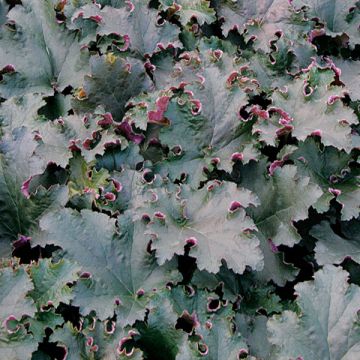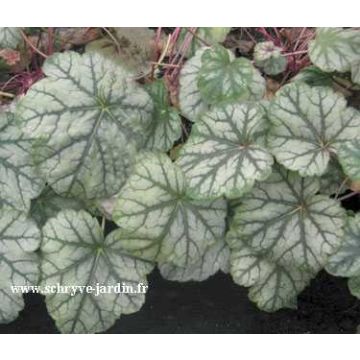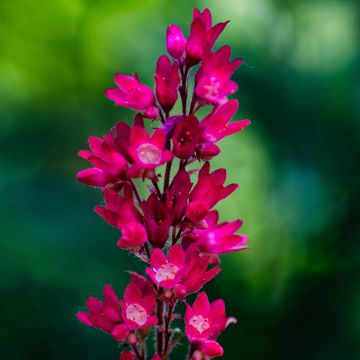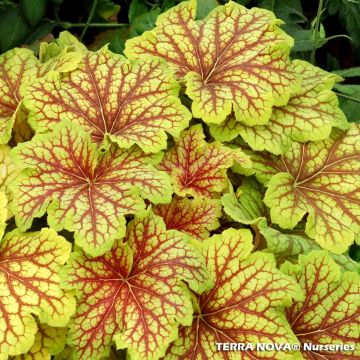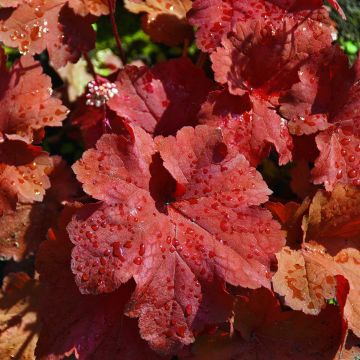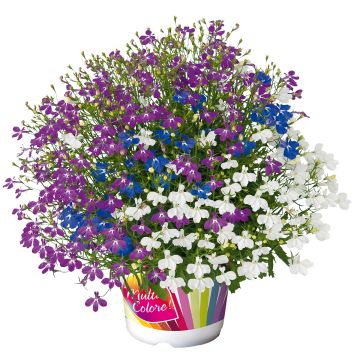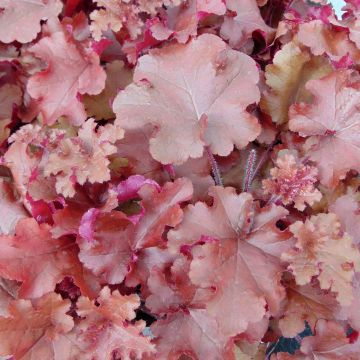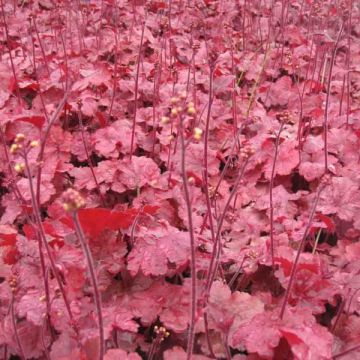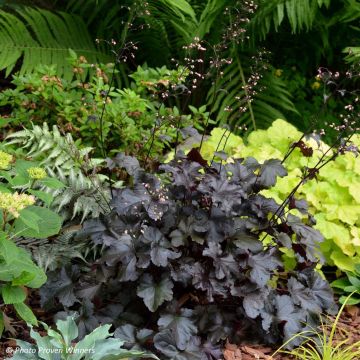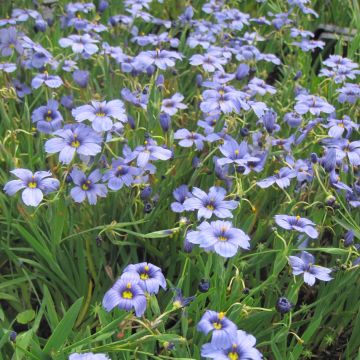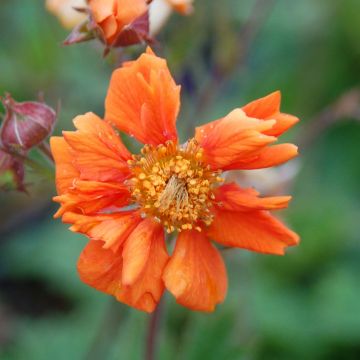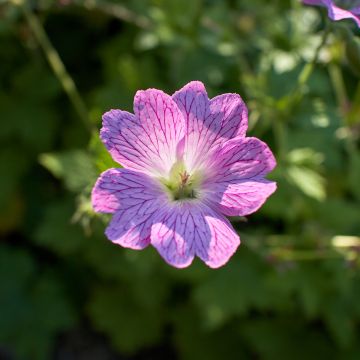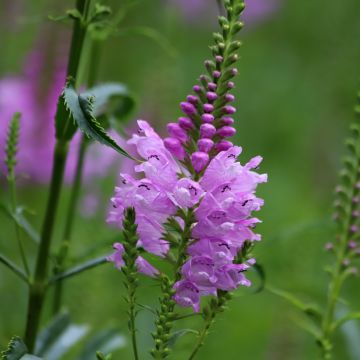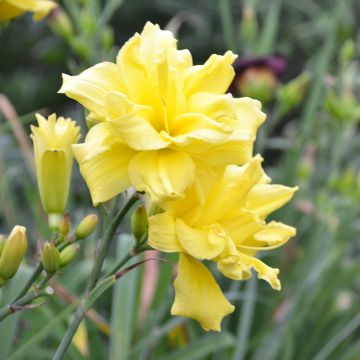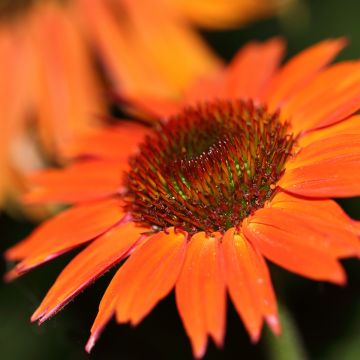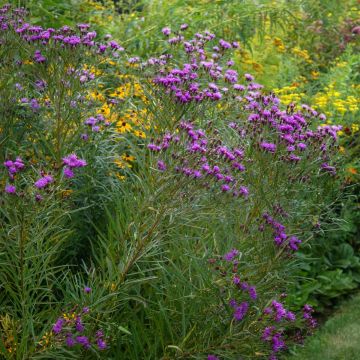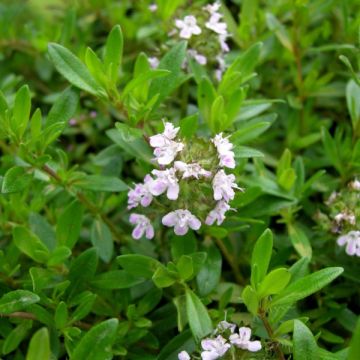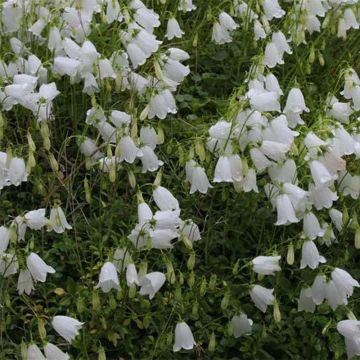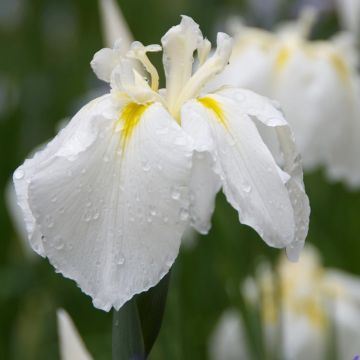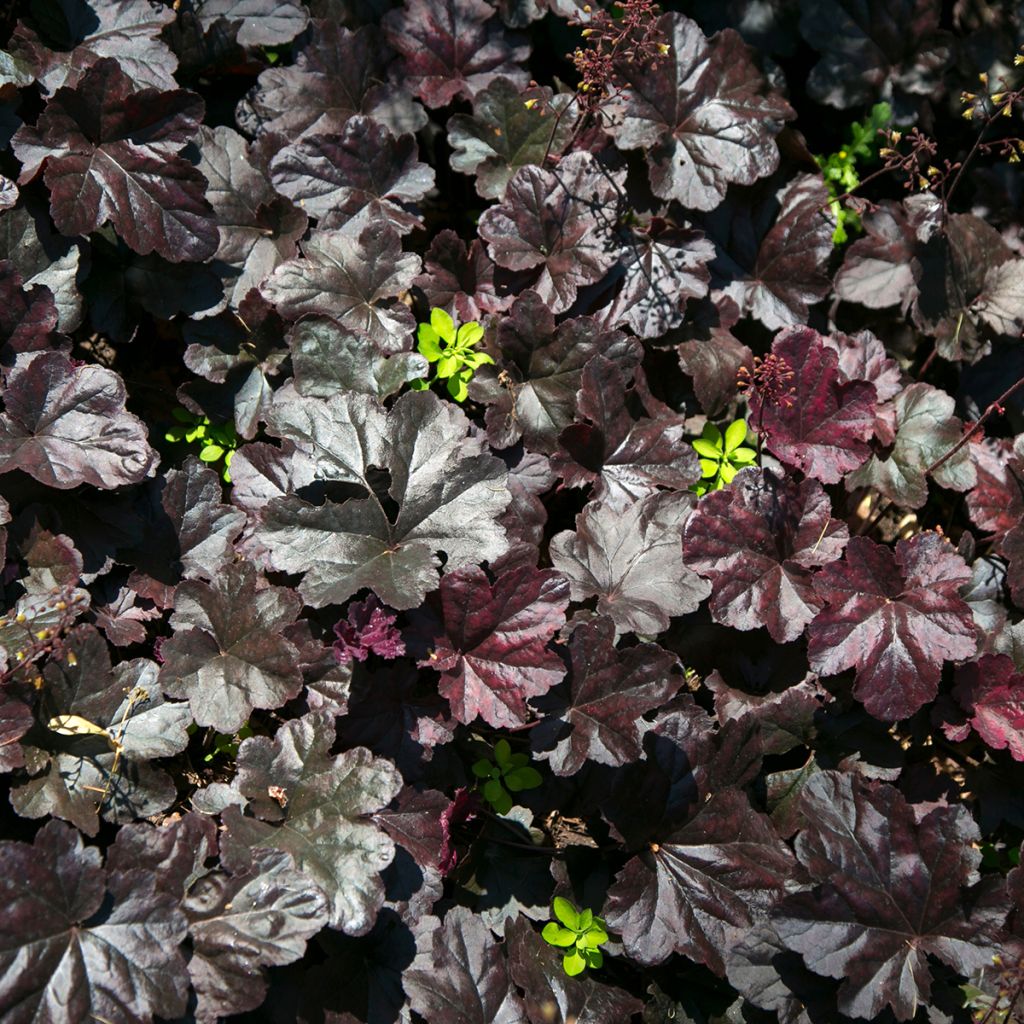

Heuchera villosa Black Beauty
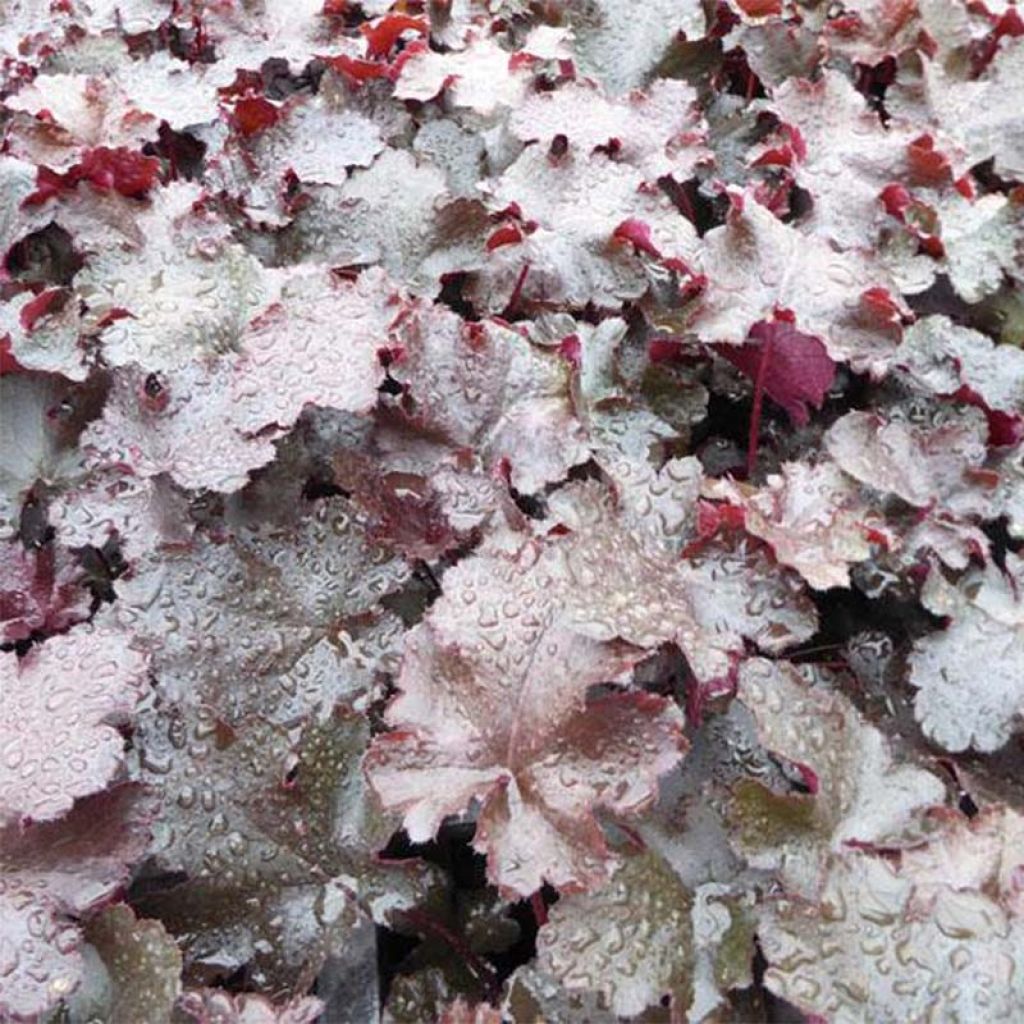

Heuchera villosa Black Beauty
Heuchera villosa Black Beauty
Heuchera x villosa Black Beauty
Hairy Alumroot, Coral Bells
This item cannot be shipped to the selected country
Delivery charge from €5.90
More information
Schedule delivery date,
and select date in basket
This plant carries a 12 months recovery warranty
More information
We guarantee the quality of our plants for a full growing cycle, and will replace at our expense any plant that fails to recover under normal climatic and planting conditions.
From €5.90 for pickup delivery and €6.90 for home delivery
Express home delivery from €8.90.
Does this plant fit my garden?
Set up your Plantfit profile →
Description
Heuchera 'Black Beauty', with its bubbling and glossy foliage of rich purple with brown reflections, will delight fans of dark plants. This variety retains its leaves all year round, both in summer and winter, revealing in their intense undulations ruby-red glimmers, as well as a lovely purple-magenta reverse. Above this broad cushion of leaves, arched stems rise in late spring, carrying a creamy-pinkish cloud-like flowering of infinite lightness. This heuchera is a greedy plant that requires fertile and moist soil. It tolerates heat fairly well, but not scorching sun. In the garden, it will form a fantastic ground cover and in pots on the terrace, it will stand out off the beaten track.
Heuchera Black Beauty, registered in 2002, belongs to the Saxifragaceae family. While its parentage is unknown, it is a presumed descendant of Heuchera americana, a species with highly ornamental foliage native to the central and northern United States. This dark-leaved cultivar is a vigorous hybrid that will quickly make an impact in the garden as well as in pots.
The plant will reach an average height of 30 cm (12 in) (for foliage) and 50-60 cm (20-24 in) in width in 3-4 years. This heuchera forms a lovely spreading cushion-like clump that is dense and compact. Its evergreen foliage is the major asset of this plant: its leaves are rather erect and elongated, with intensely lobed and undulating laminae. They have a particularly remarkable colour, which is very enduring throughout the seasons and has a shiny appearance. Their colour combines dark brown-purple with some red highlights. The oldest leaves are covered with a more greyish glaze. The flowering of this variety is fairly discreet but light and airy; it begins in May and continues until June. The flowers, in small bell shapes, are white-cream with a pink calyx and are arranged along an upright and arched stem.
Heuchera Black Beauty is an astonishing ground cover for partially shaded areas of the garden and even slightly dry areas in summer. Its foliage remains decorative throughout the year and its flowering adds a lot of lightness to any setting. For example, combine it with the blue blooms of forget-me-nots, Omphalodes verna, brunneras, ajugas, columbines, bellflowers, or the lush foliage of hostas, always far from the heat of the sun. It always makes a successful pairing with foamflowers. It grows very well in pots, in the company of grasses like Carex testacea and Agropyron magellanicum. In a small shady rockery, it will accompany small ferns like Adiantum pedatum, or the beautiful marbled foliage of Asarum splendens. When planted em masse, it will form an unusual border along an east-facing pathway.
Report an error about the product description
Heuchera villosa Black Beauty in pictures
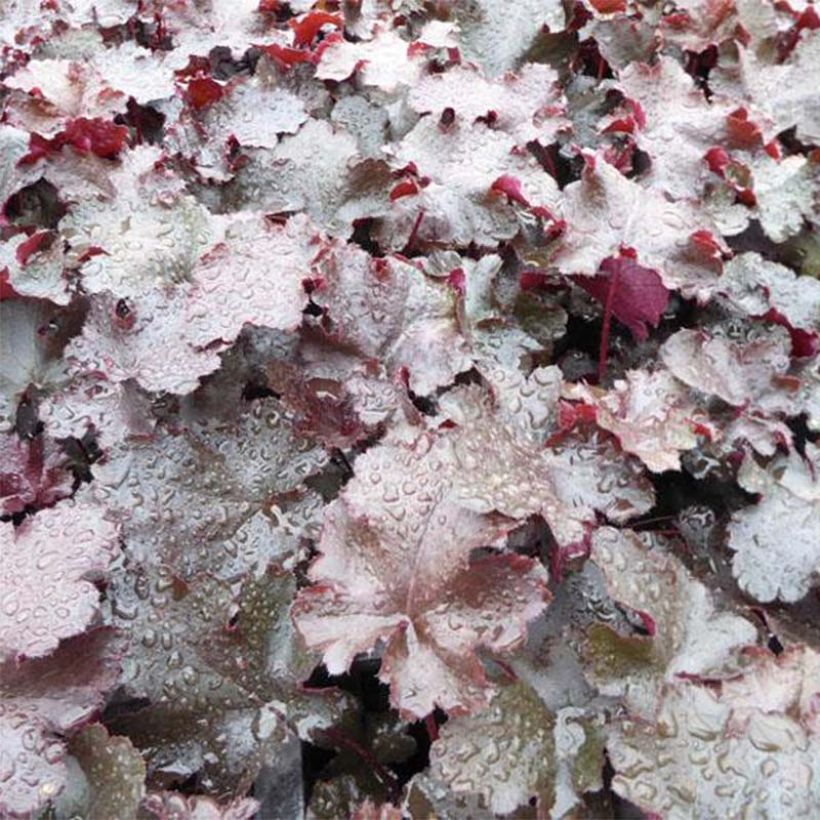

Flowering
Foliage
Plant habit
Botanical data
Heuchera
x villosa
Black Beauty
Saxifragaceae
Hairy Alumroot, Coral Bells
Cultivar or hybrid
Other Heuchera
Planting and care
Heuchera is planted early in the spring or in early autumn. Prepare a planting hole of 20 cm x 20 cm x 20 cm (8 in x 8 in x 8 in). If your soil is heavy, mix some compost with the crumbled soil, partially backfill and place your bucket (after removing the pot) so that the top of the root ball of your plant is covered with 3 cm (1 in) of soil. The addition of a base fertiliser (dried blood or crushed horn) will nourish your plant during its rooting period without the risk of burning. Firm the soil and water generously to eliminate air pockets. If the weather is dry, you will need to water regularly for a few weeks to encourage the establishment of your plant. Also water in summer if drought persists. Heucheras renew their foliage at the end of winter, so we recommend cutting the leaves from the previous year in January and February.
Planting period
Intended location
Care
This item has not been reviewed yet - be the first to leave a review about it.
Summer flowering perennials
Haven't found what you were looking for?
Hardiness is the lowest winter temperature a plant can endure without suffering serious damage or even dying. However, hardiness is affected by location (a sheltered area, such as a patio), protection (winter cover) and soil type (hardiness is improved by well-drained soil).

Photo Sharing Terms & Conditions
In order to encourage gardeners to interact and share their experiences, Promesse de fleurs offers various media enabling content to be uploaded onto its Site - in particular via the ‘Photo sharing’ module.
The User agrees to refrain from:
- Posting any content that is illegal, prejudicial, insulting, racist, inciteful to hatred, revisionist, contrary to public decency, that infringes on privacy or on the privacy rights of third parties, in particular the publicity rights of persons and goods, intellectual property rights, or the right to privacy.
- Submitting content on behalf of a third party;
- Impersonate the identity of a third party and/or publish any personal information about a third party;
In general, the User undertakes to refrain from any unethical behaviour.
All Content (in particular text, comments, files, images, photos, videos, creative works, etc.), which may be subject to property or intellectual property rights, image or other private rights, shall remain the property of the User, subject to the limited rights granted by the terms of the licence granted by Promesse de fleurs as stated below. Users are at liberty to publish or not to publish such Content on the Site, notably via the ‘Photo Sharing’ facility, and accept that this Content shall be made public and freely accessible, notably on the Internet.
Users further acknowledge, undertake to have ,and guarantee that they hold all necessary rights and permissions to publish such material on the Site, in particular with regard to the legislation in force pertaining to any privacy, property, intellectual property, image, or contractual rights, or rights of any other nature. By publishing such Content on the Site, Users acknowledge accepting full liability as publishers of the Content within the meaning of the law, and grant Promesse de fleurs, free of charge, an inclusive, worldwide licence for the said Content for the entire duration of its publication, including all reproduction, representation, up/downloading, displaying, performing, transmission, and storage rights.
Users also grant permission for their name to be linked to the Content and accept that this link may not always be made available.
By engaging in posting material, Users consent to their Content becoming automatically accessible on the Internet, in particular on other sites and/or blogs and/or web pages of the Promesse de fleurs site, including in particular social pages and the Promesse de fleurs catalogue.
Users may secure the removal of entrusted content free of charge by issuing a simple request via our contact form.
The flowering period indicated on our website applies to countries and regions located in USDA zone 8 (France, the United Kingdom, Ireland, the Netherlands, etc.)
It will vary according to where you live:
- In zones 9 to 10 (Italy, Spain, Greece, etc.), flowering will occur about 2 to 4 weeks earlier.
- In zones 6 to 7 (Germany, Poland, Slovenia, and lower mountainous regions), flowering will be delayed by 2 to 3 weeks.
- In zone 5 (Central Europe, Scandinavia), blooming will be delayed by 3 to 5 weeks.
In temperate climates, pruning of spring-flowering shrubs (forsythia, spireas, etc.) should be done just after flowering.
Pruning of summer-flowering shrubs (Indian Lilac, Perovskia, etc.) can be done in winter or spring.
In cold regions as well as with frost-sensitive plants, avoid pruning too early when severe frosts may still occur.
The planting period indicated on our website applies to countries and regions located in USDA zone 8 (France, United Kingdom, Ireland, Netherlands).
It will vary according to where you live:
- In Mediterranean zones (Marseille, Madrid, Milan, etc.), autumn and winter are the best planting periods.
- In continental zones (Strasbourg, Munich, Vienna, etc.), delay planting by 2 to 3 weeks in spring and bring it forward by 2 to 4 weeks in autumn.
- In mountainous regions (the Alps, Pyrenees, Carpathians, etc.), it is best to plant in late spring (May-June) or late summer (August-September).
The harvesting period indicated on our website applies to countries and regions in USDA zone 8 (France, England, Ireland, the Netherlands).
In colder areas (Scandinavia, Poland, Austria...) fruit and vegetable harvests are likely to be delayed by 3-4 weeks.
In warmer areas (Italy, Spain, Greece, etc.), harvesting will probably take place earlier, depending on weather conditions.
The sowing periods indicated on our website apply to countries and regions within USDA Zone 8 (France, UK, Ireland, Netherlands).
In colder areas (Scandinavia, Poland, Austria...), delay any outdoor sowing by 3-4 weeks, or sow under glass.
In warmer climes (Italy, Spain, Greece, etc.), bring outdoor sowing forward by a few weeks.

































